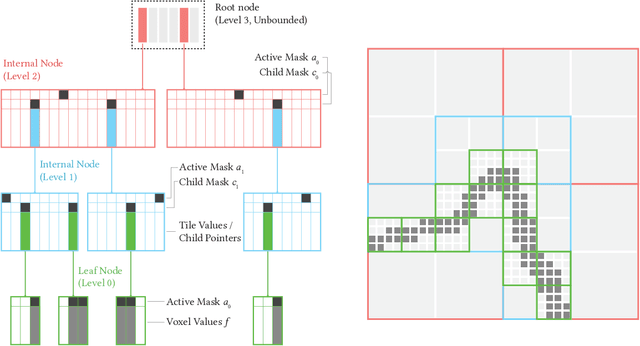NeuralVDB: High-resolution Sparse Volume Representation using Hierarchical Neural Networks
Paper and Code
Aug 08, 2022



We introduce NeuralVDB, which improves on an existing industry standard for efficient storage of sparse volumetric data, denoted VDB, by leveraging recent advancements in machine learning. Our novel hybrid data structure can reduce the memory footprints of VDB volumes by orders of magnitude, while maintaining its flexibility and only incurring a small (user-controlled) compression errors. Specifically, NeuralVDB replaces the lower nodes of a shallow and wide VDB tree structure with multiple hierarchy neural networks that separately encode topology and value information by means of neural classifiers and regressors respectively. This approach has proven to maximize the compression ratio while maintaining the spatial adaptivity offered by the higher-level VDB data structure. For sparse signed distance fields and density volumes, we have observed compression ratios on the order of $10\times$ to more than $100\times$ from already compressed VDB inputs, with little to no visual artifacts. We also demonstrate how its application to animated sparse volumes can both accelerate training and generate temporally coherent neural networks.
 Add to Chrome
Add to Chrome Add to Firefox
Add to Firefox Add to Edge
Add to Edge